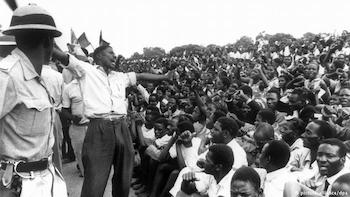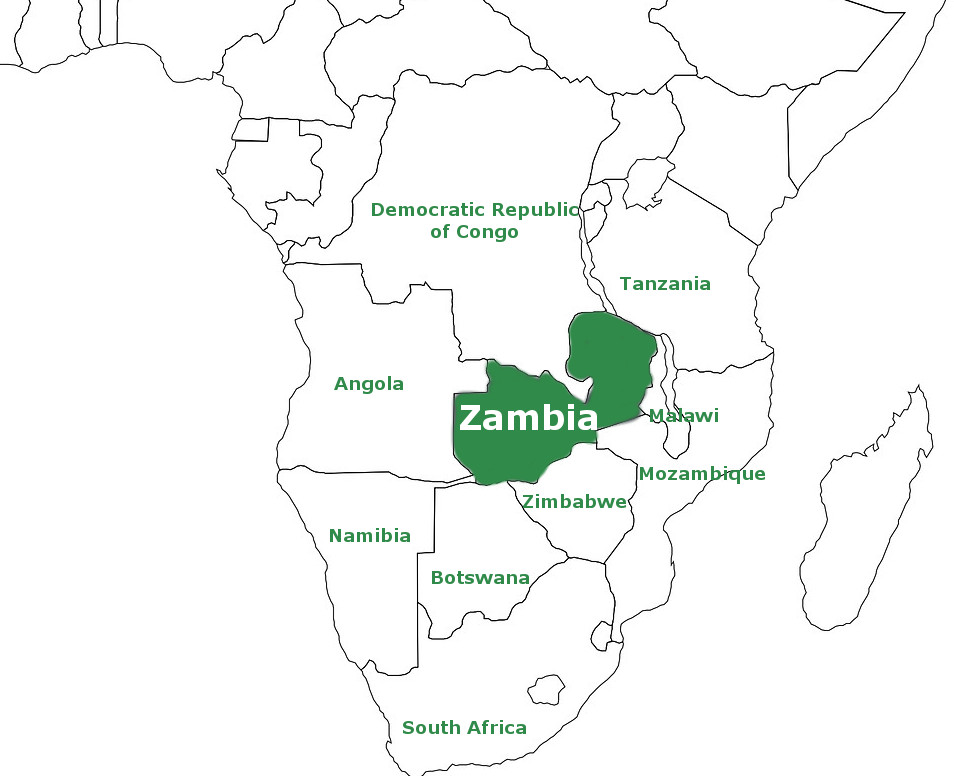 |
| One of my all-time favorite albums |
The name Zambia comes from the Zambezi River, one of the prominent rivers in this part of Africa. Zambezi itself means “great river,” and they aren’t lying. In 1911, this area was renamed Northern Rhodesia by the British, after Cecil Rhodes (he was basically a British capitalist, and what Wikipedia refers to as an “empire-builder,” I will refer to as a “chief colonizer”). But they renamed themselves Zambia upon gaining independence in 1964.
Zambia is sometimes included as part of southern Africa and sometimes eastern Africa. I tend to think of it as more southern than anything. This land-locked country is surrounded by the Democratic Republic of the Congo to the north; Tanzania to the northeast; Malawi to the east; Mozambique, Zimbabwe, Namibia, and an extremely small border with Botswana to the south; and Angola to the west. The country consists of high plateaus, hills, some mountains, and lies in the river basins of both the Zambezi/Kafue Rivers and the Congo Rivers. Victoria Falls is one of the largest waterfalls in the world because of its width (over a mile wide!) and is on the border between Zambia and Zimbabwe. Because of the country’s elevation, it has more of a moderate climate, although there are some areas that experience a more tropical and subtropical climate. They have rainy and dry seasons, which also supports their biodiversity and ecosystems.
 |
| Zambia gained its independence from Britain. |
Carbon dating shows people have been in this area between 300,000 and 125,000 years BC. The Khoisan and Batwe people arrived from Eastern African lands, and the Bantu migration brought tribes from northern and western lands. Tribes merged and created new tribes, cultures, and languages. They joined in with trading across Africa, India, and the Arabian Peninsula and later, the Portuguese. The Bemba joined with several other tribes to create the Luba Kingdom, which was mostly farmers and iron workers and eventually grew to be quite large and advanced. It was also the parent state of the Lunda empire. However, they were no match to the slave trade. Immigrants started settling around Lake Mweru and Lake Malawi and later became known as the Maravi Empire. They had problems with the Portuguese (who didn’t?), who were moving in on their trading and iron export business. As the Portuguese and British established themselves as part of trading in both goods and people, the indigenous tribes started rising up, and conflicts lasted for quite a while. One of the most famous of these leaders was Shaka from the Zulus. Many Europeans started exploring Africa around this time, and one of the most prominent in this area was David Livingstone, a Scottish physician and explorer. He was not a fan of the slave trade and wanted to end it (the city of Livingstone is named after him). Cecil Rhodes was a British mining businessman who also served as the Prime Minister of the Cape Colony. The Rhodesian colonies are named after him. In 1911, this area was renamed as a British protectorate called Northern Rhodesia (as opposed to Southern Rhodesia, which was Zimbabwe). In 1964, they finally gained their independence, renaming themselves as Zambia. There was a lot of tension during those early years as conflicts in nearby countries took place, namely Zimbabwe. During the 1970s and 1980s, Zambia struggled as the price of copper, their main export, went down. The 1990s brought a coup, and multiparty democracy was established. Zambia’s economy finally stabilized during the 2000s, and things started to look up as foreign investment in mining, especially copper, began to help create stability in the country.
 |
| Lusaka |
Located in the central southern part of the country, the capital city is Lusaka. It’s the center of both government, commerce, and education. There are a number of theatres, shopping centers, sporting venues, museums, parks and gardens, and restaurants for people to enjoy. The metro area has around 2.2 million people who live in this area. What’s interesting is that although there is bus service within the neighborhoods and city, many of the public transports are privately owned. But then I found out that there isn't even a bus map (or at least not until recently)!
 |
| Copper mining and production |
Poverty remains to be a problem in both rural and urban areas, but more so in the rural areas where the main form of earning money comes from subsistence farming. Copper mining has traditionally been their key export, but for many years, the price of copper has fallen globally. They also mine for other materials like tin, uranium, and nickel. Some of the main crops they grow include chili peppers, wheat, tobacco, and corn. Tourism, especially ecotourism, is also an important part of their economy. There are several nature preserves and protected parks, like Victoria Falls, spread across the country.
Officially, Zambia is a Christian organization, clearly introduced by the Europeans who settled (I mean, colonized) the area. The vast majority of Christians are Protestant, followed by Roman Catholics. Denominations like Lutheran, Pentecostal, Anglican, Jehovah’s Witnesses and others can be found throughout the cities and some rural areas. However, there are other religions represented in Zambia as well, including Bahá’í, Islam, and Judaism.
English is the official language because of its status as a British protectorate. It’s used as the official language for government and education. In the capital of Lusaka, Nyanja (or Chewa) is the main local language spoken there. Bemba is the main local language spoken throughout much of the rust belt. Other local languages that are spoken and supported through the media include Tonga, Lozi, Kaonde, Lunda, and Luvale.
I am fascinated with large natural structures. It always leaves me in awe. And Victoria Falls is one of those. As a kid, I would stare at photos of this. I didn’t fully realize it was located between Zambia and Zimbabwe, though. I missed the opportunity to see Iguaçu Falls when I was in Brazil, and I haven’t been to Niagara Falls (yet). But Victoria Falls is definitely on my bucket list of things to see.
Up next: art and literature




No comments:
Post a Comment